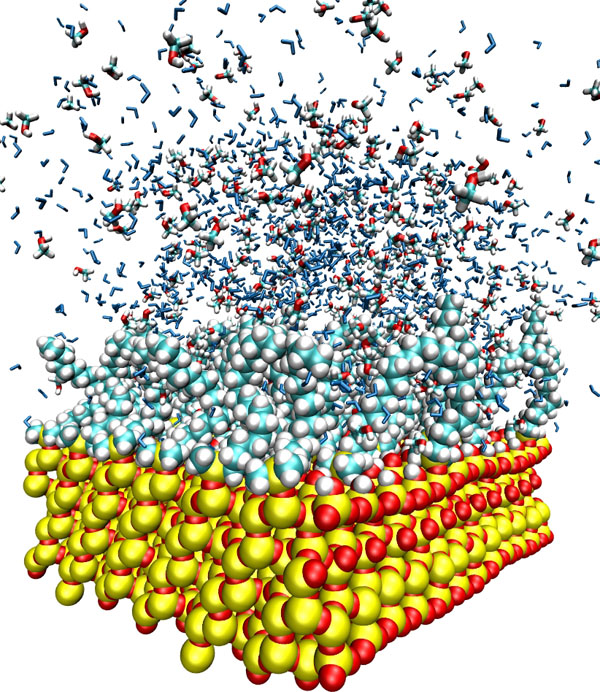HPLC is an effective procedure to separate compounds of different polarities. High pressures are typically employed to improve efficiency.

Snapshot from a simulation of HPLC. The stationary phase is composed of dimethyl-octadecyl-silane chains covalently bonded to the (1,1,1) face of beta-cristobalite quartz. The mobile phase is a 1:1 mixture of water and methanol.
Recently, however, experimental work by our colleagues has demonstrated that higher pressures have effects on the structure of the HPLC stationary phase. These effects are still poorly understood.
Our research involves molecular modeling of HPLC to try to directly observe the behavior of the stationary phase under higher pressures.
Time-evolution movie of the stationary phase of HPLC. The mobile phase is water.